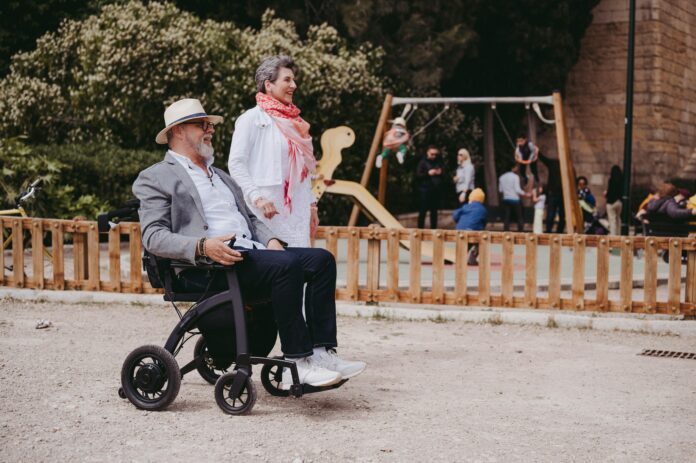Life after a stroke can be a journey of resilience and recovery, and the right home equipment plays a pivotal role in empowering independence.
From enhancing mobility to ensuring safety, selecting the right tools is essential for the well-being of stroke survivors. The article explores the empowering realm of crucial home equipment for stroke survivors, where every piece tells a tale of reclaiming autonomy and embracing a life redefined.
1. Aids to Mobility
Stroke survivors often prioritize mobility restoration above everything else. The right mobility aids may make a world of difference when fostering autonomy. Mobility aids, including walkers, canes, and crutches, are essential for patients on their recovery journey. For instance, when used in the home as an assistive device for stroke patients, VELA Chairs typically provide increased mobility, improved balance, and enhanced comfort.
A rollator (a walker with wheels) may provide stability and mobility for those with trouble walking or maintaining their balance. It’s crucial to choose the correct kind of help depending on one’s specific requirements and level of development. The goal isn’t only to get about; it’s to do it confidently and with as little help as possible.
2. Adaptive Fixtures for the Lavatory
The bathroom can be a challenging space post-stroke, but adaptive equipment can turn it into a haven of safety and independence. Installing grab bars near the toilet and in the shower or tub can prevent falls and provide much-needed support.
Moreover, having a safe and stable seat in the shower may make even the most tedious of hygiene regimens much more bearable. Raised toilet seats with grips are another step toward making the restroom more welcoming and comfortable for those with mobility issues.
3. Home Accessibility Modifications
Creating an accessible home environment is crucial for stroke survivors looking to reclaim their independence. Simple modifications, such as ramps for entryways and grab bars strategically placed throughout the home, can make a significant impact.
Moreover, making entrances wider and clearing the area of obstructions makes it simpler for those using wheelchairs to go around. Not to forget, lever-style door handles are more straightforward than conventional knobs, making for a more accessible home for stroke survivors regaining their independence.
4. Communication Aids
Assistive technology may help stroke survivors who are having trouble communicating reconnect with others. Individuals with difficulty expressing themselves verbally might benefit significantly from using speech-generating gadgets, tablet applications, or communication boards.
In addition to high-tech solutions, low-tech communication aids, such as picture boards or notebooks with commonly used phrases, can be simple yet effective. These aids assist in expressing needs and foster a sense of agency, allowing individuals to engage in conversations and social interactions actively.
5. Adaptive Kitchen Tools
Regaining independence in the kitchen, generally considered the heart of the house, is a significant goal for many stroke survivors. With the help of ergonomically designed utensils, easy-grip tools and adaptable cutting boards, anybody may experience the pleasure of cooking.
Adaptive cooking utensils are more than simply gadgets; they’re also means of self-determination. Specialized tools, such as one-handed cutting machines and anti-slip mats, make cooking safer and more accessible. These aids allow stroke patients to regain their culinary independence, allowing them to cook with pride and enjoy the fruits of their labor once more.
Conclusion: A Path to Independence
The correct home devices may help stroke survivors on their paths to recovery and independence. From mobility aids that make moving easier to toilet adaptations that keep people safe to communication aids that help people stay connected, each component is crucial.
Recovering a feeling of control and agency is equally essential as regaining physical mobility when empowering independence. It’s about breaking down the monotony of everyday life into manageable chunks and making the house a haven that encourages healing. As stroke survivors navigate this path, the right equipment becomes not just a tool but a companion on their journey to greater autonomy.
Image by Rollz International from Pexels
The editorial staff of Medical News Bulletin had no role in the preparation of this post. The views and opinions expressed in this sponsored post are those of the advertiser and do not reflect those of Medical News Bulletin. Medical News Bulletin does not accept liability for any loss or damages caused by the use of any products or services, nor do we endorse any products, services, or links in our Sponsored Articles.



